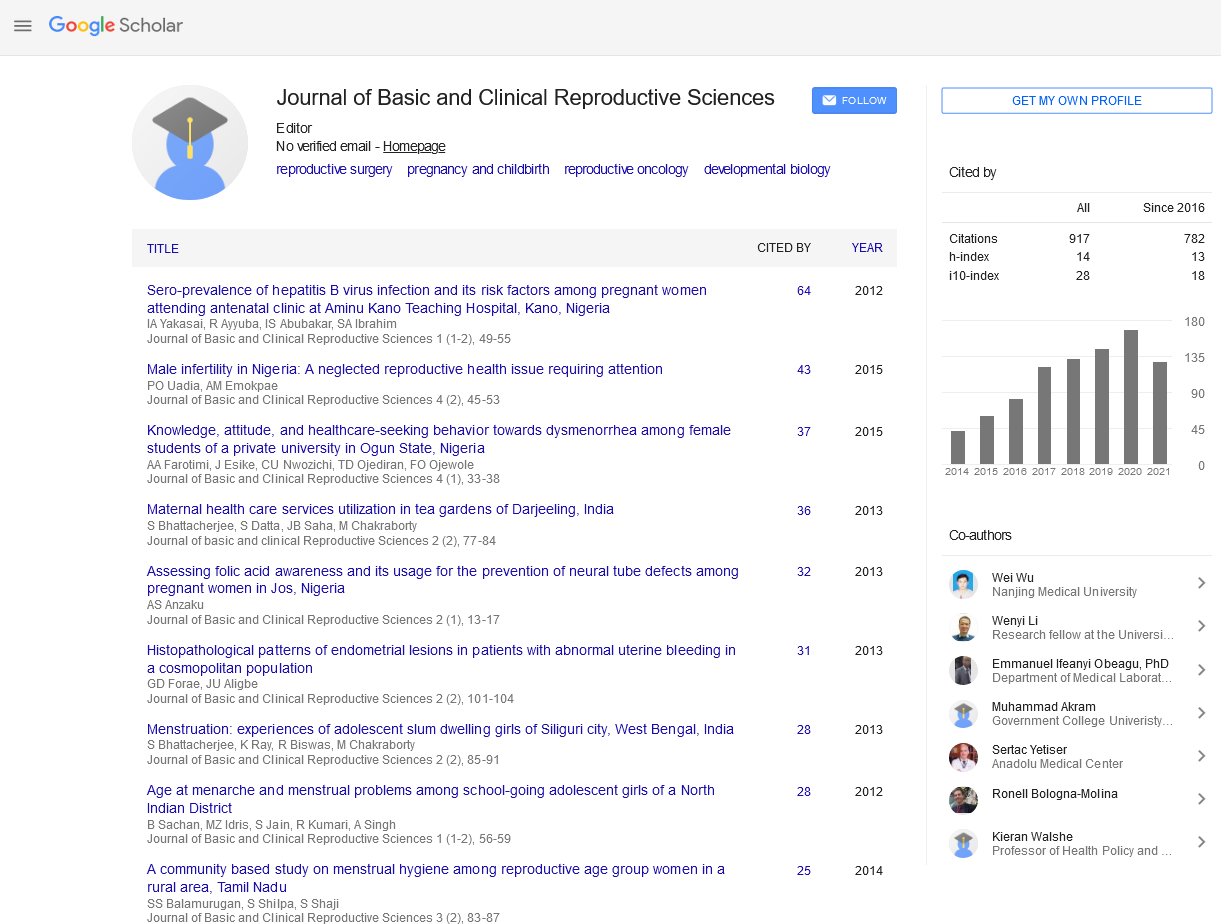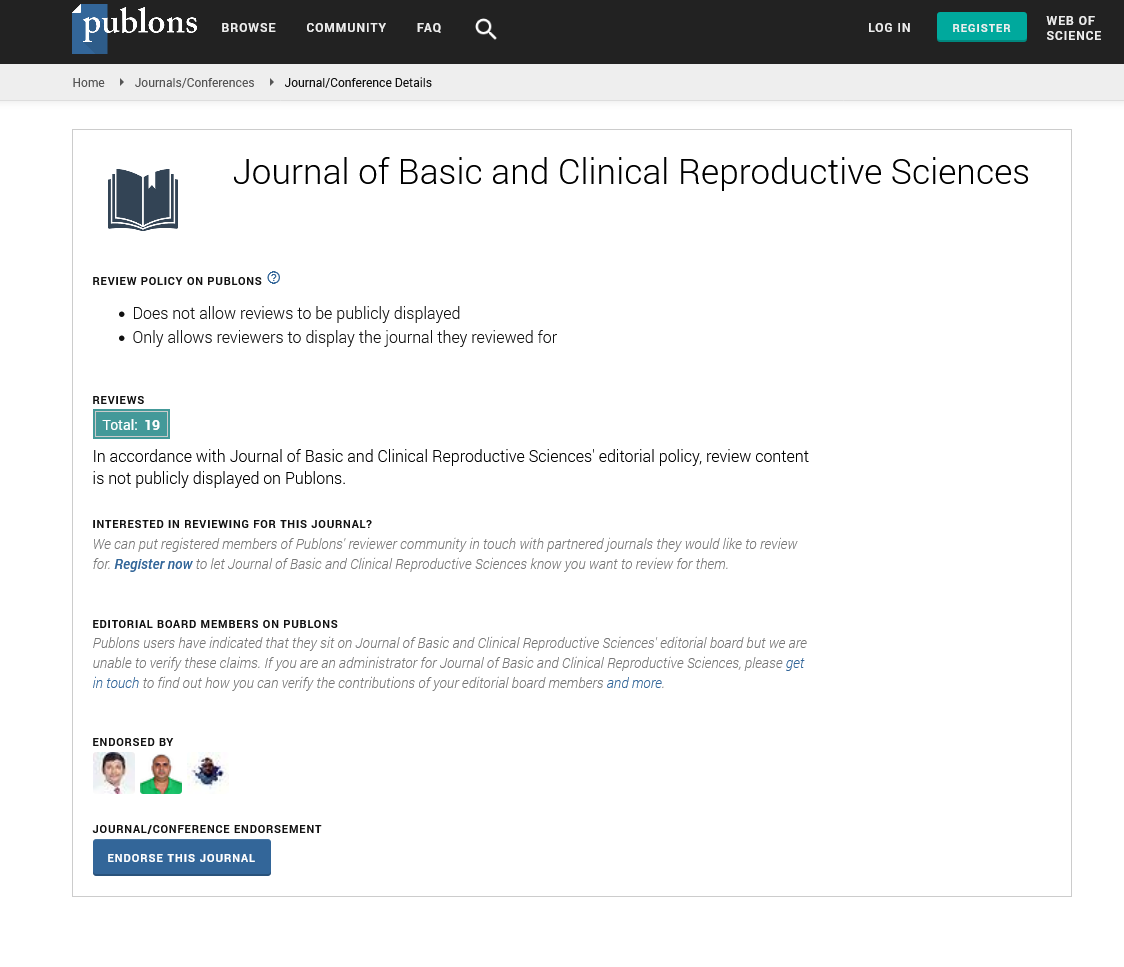Perspective - Journal of Basic and Clinical Reproductive Sciences (2024) Volume 13, Issue 3
The Development and Clinical Application of Non-Hormonal Contraceptive
Received: 20-May-2024, Manuscript No. JBCRS-24-143323; Editor assigned: 22-May-2024, Pre QC No. JBCRS-24-143323 (PQ); Reviewed: 05-Jun-2024 QC No. JBCRS-24-143323; Revised: 14-Jun-2024, Manuscript No. JBCRS-24-143323 (R); Published: 21-Jun-2024
This open-access article is distributed under the terms of the Creative Commons Attribution Non-Commercial License (CC BY-NC) (http://creativecommons.org/licenses/by-nc/4.0/), which permits reuse, distribution and reproduction of the article, provided that the original work is properly cited and the reuse is restricted to noncommercial purposes. For commercial reuse, contact reprints@pulsus.com
Description
Contraceptive choices have expanded significantly over the past few decades, with non-hormonal methods gaining increased attention for their effectiveness and safety. These methods provide alternatives for individuals who cannot or prefer not to use hormonal contraception due to health concerns, side effects, or personal preferences. Copper IUDs, such as the Para Gard, have long been a staple of non-hormonal contraception. They work by releasing copper ions that create a toxic environment for sperm, preventing fertilization. Recent advancements have focused on improving the design and efficacy of copper IUDs. Innovations include new materials and shapes that enhance comfort and reduce the risk of side effects. Research is ongoing to explore variations in copper release rates and their impact on contraceptive effectiveness. The development of non-hormonal contraceptive methods for men is a rapidly growing field. Recent advancements include:
Vasalgel: A gel injected into the vas deferens to block sperm transport temporarily. It works by forming a gel-like barrier that prevents sperm from mixing with semen. Early trials have shown promising results in terms of safety and reversibility.
Immunocontraceptives: These vaccines target sperm or sperm-penetrating proteins to induce an immune response that prevents fertilization. Research is ongoing to optimize these vaccines for safety and efficacy.
FABMs involve tracking ovulation and other fertility signs to avoid intercourse during fertile periods. Advances in technology have improved the accuracy of these methods. Digital fertility monitors and apps now use algorithms to analyse data from basal body temperature, cervical mucus, and hormonal levels, providing more reliable predictions of the fertile window. These advancements have made FABMs a more accessible and user-friendly option for individuals seeking non-hormonal contraception. Barrier methods, such as condoms, diaphragms, and cervical caps, prevent sperm from reaching the egg. New materials and designs, such as ultra-thin latex or non-latex options like polyurethane, have enhanced comfort and effectiveness. Innovations also include the development of condoms with added features, such as spermicidal coatings or textured surfaces for increased pleasure and protection. Modern cervical caps, such as the Lea’s Shield, provide improved fit and comfort. Research continues into materials and designs that increase effectiveness and ease of use. Spermicides, which work by immobilizing or killing sperm, are used in combination with barrier methods for added protection. Recent advancements focus on developing more effective and less irritating spermicidal agents. Research is exploring new spermicidal compounds that are as effective as Nonoxynol-9 but with fewer side effects. These alternatives aim to provide effective contraception while minimizing vaginal irritation. New formulations use bio adhesive properties to enhance the contact between the spermicide and the vaginal wall, improving efficacy and reducing the required dosage. The field of non-hormonal contraception is dynamic, with several exciting avenues for future research. Researchers are exploring the use of nanotechnology to develop targeted delivery systems for contraceptive agents. This could lead to new methods with improved precision and fewer side effects. Combining non-hormonal methods with emerging technologies may improve effectiveness and user compliance.
Conclusion
Advances in non-hormonal contraceptive methods provide promising alternatives for individuals seeking effective and safe birth control options. From innovations in copper IUDs and male contraceptives to enhanced barrier methods and spermicides, the field continues to evolve. Ongoing research and development are vital for expanding the range of non-hormonal options and improving their effectiveness and accessibility. As new technologies and methods emerge, they hold the potential to provide more personalized and effective contraceptive choices for diverse needs and preferences.


